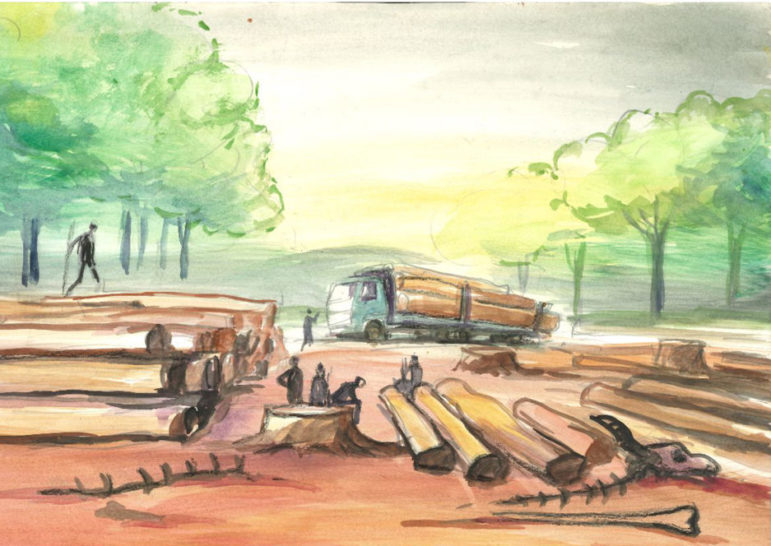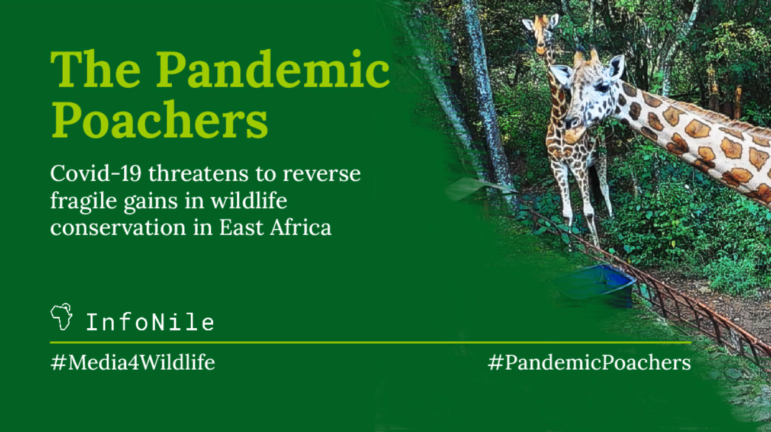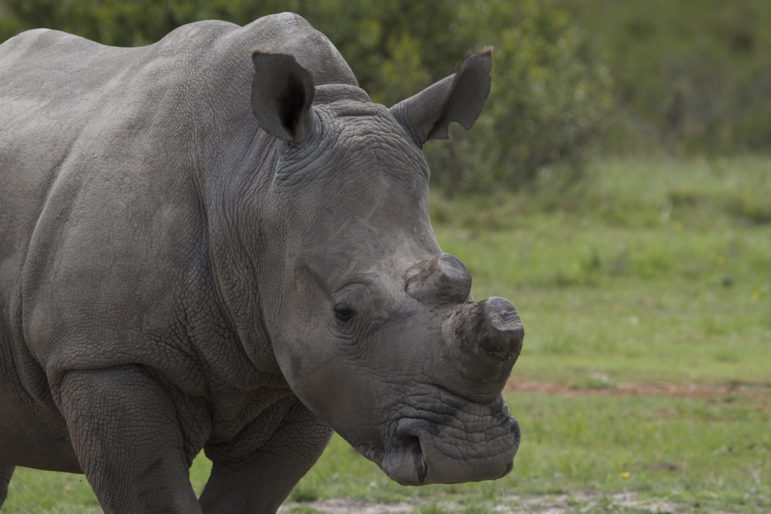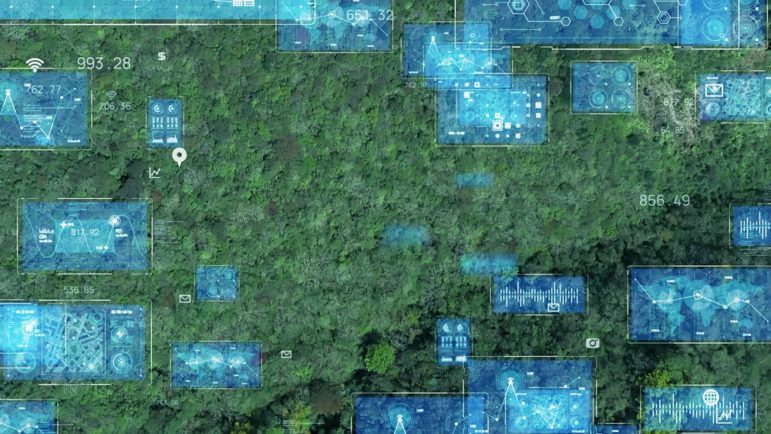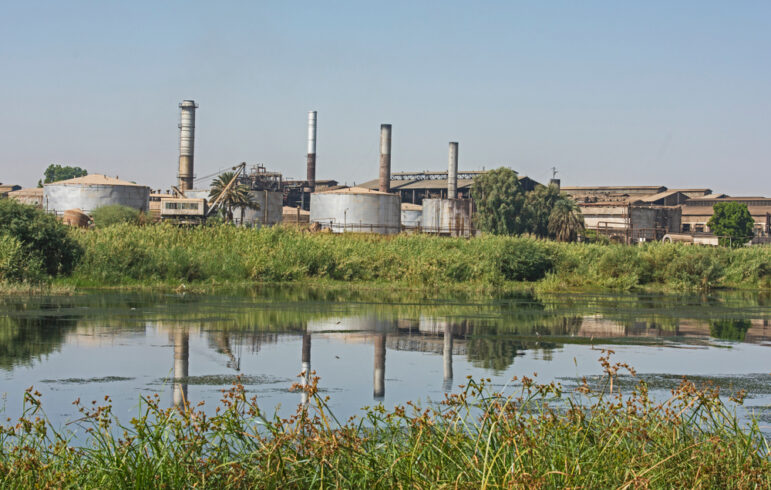

View across the Nile River in Egypt. Image: Shutterstock
Inside the Cross-Border Network Exposing the Environmental Crisis Facing Africa’s Longest River
In 2017, inside a modest media nonprofit office in Kampala, Uganda, a collaboration between Ugandan journalist Fredrick Mugira and US journalist Annika McGinnis gave rise to InfoNile, one of Africa’s most ambitious environmental journalism initiatives.
What began as a project under Water Journalists Africa, a network Mugira had started in 2011, has since grown into a sprawling ecosystem of cross-border investigations, multimedia storytelling, and data-driven reporting stretching across the 11 countries covered by the Nile Basin.
InfoNile was founded with a clear ambition: producing deeply reported stories about water, climate, and biodiversity, told through the perspectives of local journalists. This mission is especially difficult in a region where this kind of reporting is often underfunded and under-published.
When launching the project, Mugira noted that journalists lacked training and resources. He also saw a significant disconnect between scientists and journalists, which shaped not just which stories were told, but how they were told. “We saw these as major problems,” he said. “There was an escalating environmental crisis in the Nile Basin.”
Why the Nile Matters
The Nile, Africa’s longest river, stretches nearly 6,700 kilometers (4,163 miles) from Lake Victoria to the Mediterranean, cutting through 11 countries across East and North Africa. It flows through politically sensitive and ecologically fragile terrain, serving as a lifeline for more than 200 million people. Despite the Nile’s abundant flow, though, many communities along its banks lack reliable access to clean water. This paradox defines both the urgency and complexity of InfoNile’s work.
To help make sense of that complexity, InfoNile relies on geo-journalism, a form of storytelling that combines data, satellite imagery, and geographic information systems (GIS) to visualize environmental change over time.
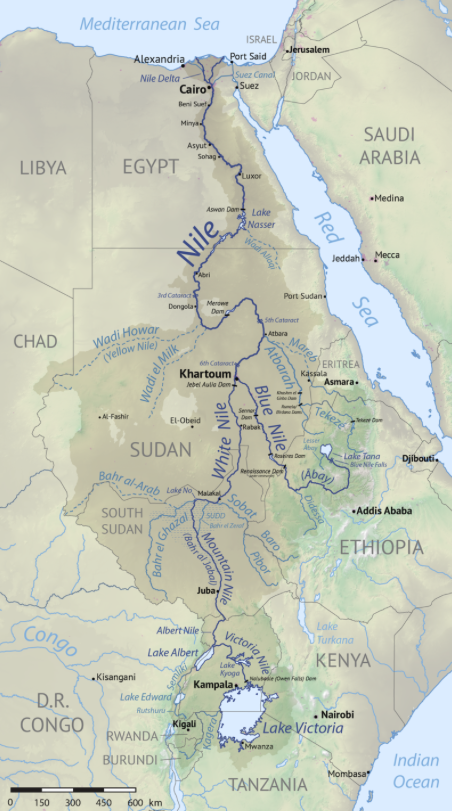
Map of the Nile River Basin. Image: Wikipedia, Creative Commons
“Data helps us uncover hidden trends,” Mugira said. “It gives us evidence. Without it, you’re just telling stories. With evidence, you’re making a case.”
This approach was central to one of InfoNile’s most ambitious investigations: Sucked Dry, a Pulitzer Center-funded, year-long project on foreign land grabs in the Nile Basin. Collaborating with 10 journalists and the land monitoring organization Land Matrix, the team mapped large-scale land acquisitions by foreign investors, many of whom diverted water from the Nile to grow export crops like alfalfa and flowers. The profits rarely stayed in the communities.
“In South Sudan, one investor grabbed land to plant bananas. When war broke out, they abandoned it. The community can no longer access it,” Mugira said. The investigation triggered a review of land ownership laws in the country. “It was one of our most complex projects, both in scale and in impact,” he said.
Another notable investigation, Pandemic Poachers, explored wildlife trafficking across the Nile Basin during the COVID-19 pandemic. Journalists partnered with InfoNile coordinators and local data wranglers to access court records and law enforcement data, tracking arrests, prosecutions, and sentencing related to wildlife crimes.
The project visualised trafficking patterns and highlighted how poachers exploited reduced surveillance during lockdowns. In countries like Uganda, Kenya, and South Sudan, reporters worked with judicial officials to uncover how cases moved or stalled in the courts.
The methodology involved deep local sourcing, access to fragmented public records, and support from regional experts who helped verify data. These efforts also revealed an unexpected trend: even with borders closed, wildlife trafficking continued, though in more discreet and harder-to-trace ways. “It was surprising, but we saw how trafficking didn’t stop. It just became more hidden,” Mugira said.
How InfoNile Created Its Network
InfoNile’s model now includes in-depth training programs, data fellowships, and cross-border mentorship. Since its launch, the initiative has trained more than 250 journalists and supported over 400 stories across Nile Basin countries.
Journalists are first trained in environmental and data reporting, then selected through a competitive pitch process. Those chosen receive funding and editorial guidance, publish in local outlets, and have their work compiled into the wider array of multimedia investigations curated by InfoNile.
One recent example is Dredged Rivers, a cross-border investigation into how unchecked urban expansion in Rwanda, Burundi, Kenya, and Uganda is degrading rivers and aquatic ecosystems in rapidly growing secondary cities.
“This was one of our most ambitious projects,” said Mugira. “We asked journalists to look beyond capital cities and focus on growing urban centers, places where infrastructure struggles to keep up with expansion and the environmental costs are often ignored.”
Journalists from the four countries covered were selected through a competitive process, trained in environmental and data reporting, and supported to investigate river degradation. With guidance from InfoNile’s coordinators, they collected water samples, interviewed residents and public officials, accessed scientific records, and documented environmental violations.
The result was a bold, collaborative multimedia investigation that revealed how industrial effluents, poor planning, and climate stress are contaminating rivers and threatening biodiversity, water access, and public health. Though first published in local languages and media outlets, the stories were later compiled into a region-wide project featuring satellite imagery, maps, and cross-border visualizations.
InfoNile founders Annika McGinnis (center) and Fredrick Mugira (right). Image: InfoNile
Real Impact in Kenya, Uganda, and Beyond
Kenyan journalist Mactilda Mbenywe focused on Kisumu’s Kisat, Kibos, and Auji rivers. “These rivers were once essential, but mismanagement and rapid urbanization have pushed them to the brink,” she said.
With support from InfoNile, she conducted water tests with fisheries officers, interviewed cholera survivors, and uncovered violations by sugar factories and sewerage plants discharging waste into the rivers.
Her reporting triggered both personal risk and policy response. During the reporting, Mbenywe received threats, was followed by unknown individuals, and eventually had to go into hiding. “I had to leave Kisumu for a while and rely on my networks,” she said.
Despite the danger, she continued working with her editors at the Standard Group and InfoNile’s team. The final story, published by The Standard and InfoNile, spurred the government to inspect several companies and prompted the Kisumu Water and Sanitation Company to admit the need to expand coverage.
“What struck me was how quickly people responded when the story was published,” she said. “Residents began boiling water. County government leaders started talking about it.”
In Uganda, a similar story of degradation is unfolding in the Mpanga River.
Originating in the Rwenzori Mountains and running through Fort Portal to Lake George, the river is essential to local agriculture and urban water supply. Journalists found that deforestation, land encroachment and unregulated waste dumping had polluted the river so severely that authorities were forced to build a new water treatment plant.
The story highlighted how environmental decay in Fort Portal, Uganda’s first declared “Tourism City,” was compromising the very resources that supported its growth.
In Rwanda, Eric Twahirwa chronicled the environmental collapse of the Nyabarongo River, which flows through Kigali and several secondary cities. Once a national artery, the river is now choked with household garbage, industrial runoff, and urban erosion. “Household waste is the most dangerous,” Twahirwa said, “because people dump directly into the river due to unaffordable waste collection.”
He spent a year gathering evidence, often facing hesitant officials and skeptical communities. One breakthrough came when he struck up a conversation with local fishermen about their declining catches. “Only after I explained how pollution was killing their fish did they open up,” he said. “I had to teach people why the story mattered.”
This story, published in both Kinyarwanda and English, earned a first runner-up prize from Rwanda’s Ministry of Environment and led to visible behavioral change. “People stopped throwing tires and bones into the river,” he said. “It’s still polluted, but not as bad as it was.”
In Burundi, the team examined the sand mining crisis along the Ntahangwa, Kanyosha, and Muha rivers in Bujumbura. These once-stable rivers have been transformed into gaping, flood-prone channels, some now over 100 meters wide due to rampant sand harvesting for construction.
The reporting revealed how flooding was destroying homes, schools, and infrastructure, with children as young as 12 leaving school to join the sand mining trade. In some areas, rivers that were once just a meter wide had expanded into vast floodplains due to unregulated sand harvesting. With no regulations or restoration plans in place, the environmental damage continued to worsen.
Four Countries, a Similar Picture
Despite differing local contexts, the four countries revealed strikingly similar patterns: unregulated development, weak enforcement of environmental rules, and growing threats to public health and biodiversity. “We realised the negligence and pollution were consistent,” said Mbenywe. “But the solutions were often similar as well.”
One of Dredged Rivers’ greatest strengths was its collaborative model. Journalists from different countries worked closely across borders, sharing data, comparing notes, and aligning their reporting to build a coherent regional narrative.
For Twahirwa, this was a transformative experience. “It was my first cross-border project,” he said. “I used to be a local reporter, but now I see myself as a regional reporter.” Mbenywe agreed: “The regional lens helped me recognize that Kisumu’s water crisis wasn’t isolated. It’s a symptom of a larger pattern across the Nile Basin.”
Behind the scenes, the collaboration wasn’t always easy. Mbenywe recalled moments when regional politics threatened to get in the way. Tensions between countries like Uganda and Rwanda, or Kenya and Uganda, sometimes cast a shadow over the group’s work.
“It wasn’t between us personally, but the baggage was there,” Mbenywe said. “We kept saying: What’s the bigger picture? We needed to serve the Nile, not politics.” The team stayed connected through a dedicated WhatsApp group, where they held weekly editorial meetings, coordinated investigations, compared notes, and worked through challenges to ensure consistency across their reporting despite the distance.
The project also benefited from InfoNile’s support structure. Journalists received grants, editorial guidance, and training in data storytelling, mapping, and visual journalism. For Twahirwa, the transformation was real. “Before this project, I didn’t use geo-data or maps in stories,” Twahirwa said. “But during the InfoNile training, I saw how visuals could speak louder than words, especially in Rwanda, where readers engage more with images than long texts.”
The impact was also tangible. In all four countries, local governments responded, either by promising clean-ups, conducting inspections, or initiating policy reviews. In Kenya, Mbenywe said, “residents now know to question what goes into the river. That’s a big shift.”
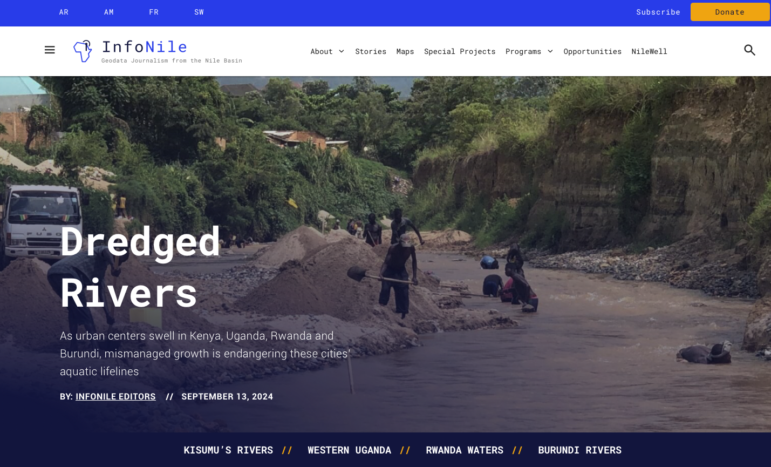
The InfoNile project Dredged Rivers looked at the environmental stressors impacting key rivers across four African countries. Image: Screenshot, InfoNile
Call to Invest in Hard-Hitting Journalism
Ultimately, Dredged Rivers is more than an exposé. It reflects InfoNile’s wider model of cross-border environmental journalism that is investigative, community-focused, and solutions-driven.
As pollution and climate pressures intensify across the Nile Basin, the project underscores what can happen when local journalists are empowered to report collaboratively on regional crises. It is a call for better environmental governance and for sustained investment in journalism that can hold polluters and policymakers to account.
This approach runs through many of InfoNile’s projects. Stories are typically produced and published first in local languages and media, then adapted into cross-border series supported by satellite imagery, mapping tools, and community-sourced data. Each piece is created with local audiences in mind, then woven into broader regional investigations. “We don’t compete with local media,” Mugira said. “We amplify them.”
However, as InfoNile has grown, so have the logistical and editorial hurdles. “We have had to work with our lawyers to send out warning letters to journalists who we give grants to, and they just go quiet,” Mugira said. “Some send in strong pitches, we fund them, and they disappear.” Others, he added, submit substandard work or stories that deviate significantly from their original proposals. To address this, InfoNile now disburses grants in instalments and relies on regional coordinators to follow up in the field.
How InfoNile Protects Reporters
Reporting on environmental degradation in the Nile Basin carries real political risk. Some InfoNile journalists have been questioned by their governments, and one in South Sudan was arrested and later forced into exile. To protect its reporters, InfoNile often shares or anonymizes bylines and emphasizes collaboration over individual credit. “Even in places where journalism is under threat, we’ve found ways to keep telling the story,” Mugira said.
Another challenge has been the disconnect between journalists and scientists, which often affects both the accuracy and framing of environmental stories. To bridge this gap, InfoNile launched NileWell, a digital platform that pairs reporters with researchers to co-produce stories grounded in both scientific evidence and local context.
Through a nine-month fellowship, journalist-scientist teams collaborate from story conception to publication, selecting topics that matter to local communities while meeting scientific standards. Beyond producing stories, NileWell aims to build long-term relationships that foster mutual understanding and improve the quality of science journalism across the region. “We wanted scientists to see journalists as allies, not adversaries.”
The organization also ensures that stories do not just inform outsiders. They are brought back to the communities they are about. Through photo exhibitions, community screenings, and open dialogues, residents see themselves reflected in the reporting. “We’ve had families come to the exhibitions and recognize themselves,” Mugira said. “They begin to trust journalists. They want to tell more stories.”
What’s Next for InfoNile?
Like many nonprofit media ventures, InfoNile is funded by donors. It relies on grants from institutions such as the Pulitzer Center, the Earth Journalism Network, and the World Bank.
“There’s less money for journalism everywhere,” Mugira said. “We’re trying to build donor trust. But we’re also thinking commercially. Can we sell our data visualizations, or license our work?”
Despite the challenges, Mugira remains optimistic. While many journalists in the region gravitate toward politics or sports, he noted, few are willing to dive into the complexities of science and environmental reporting. “That’s our advantage,” he said.
As climate shocks intensify and environmental stakes rise, stories from the Nile that are rooted in data, told by local reporters, and grounded in community voices offer more than just warnings. They are a blueprint for how journalism can investigate, inform, and empower.
Editor’s Note: This story was originally published by The Reuters Institute and is reposted here with permission.
Maurice Oniang’o is an award-winning freelance multimedia journalist and documentary filmmaker based in Nairobi, Kenya. He has written for National Geographic, 100 Reporters, Africa.com, and Transparency International, among others. A National Geographic Explorer recipient, he has also produced documentaries for National Geographic’s Ultimate Vipers, as well as Project Green, Africa Uncensored, NTV Wild, and Tazama.

